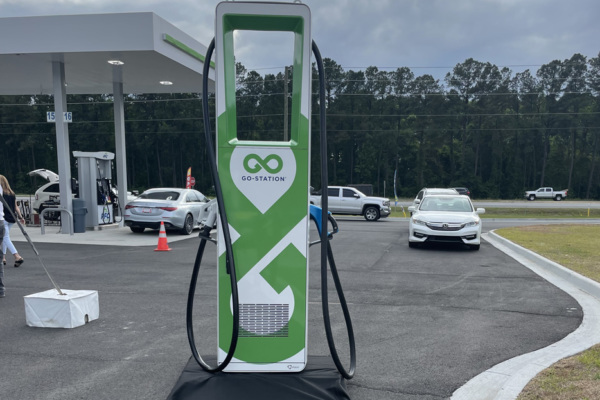“Right now, the clean transportation funding opportunities are about $3 billion per year,” said Joe Annotti, senior vice president and partner for GNA.
Dedrick Roper, director of public-private partnerships for ChargePoint, said incentives help organizations make the jump sooner. “They effectively buy down your capital cost, so the length of time to break even on your investment is shortened,” he said. “We see a lot of organizations tapping into these funds and using them as pilots.”
Even if operators aren’t planning to install charging anytime soon, it helps to get the facts and understand available incentives. “There may be funding opportunities available so that it makes sense to do it now,” said Michael Battaglia, senior vice president of sales and business development at Blink Charging. “Do you risk waiting and the funding running out, or do you install ahead of the curve knowing you're going to get cost mitigation?”
Need more information on EV charging funding opportunites information? Fill out the form here to request more information on EV charging funding or submit any EV charging funding for truckstops and travel plaza questions.
The program will provide nearly $5 billion over five years to help states create a network of EV charging stations along designated Alternative Fuel Corridors, particularly along the Interstate Highway System. Battaglia said the majority of the funds in the infrastructure bill will be passed through the DOT down to the state level, and a specific amount will be earmarked for DC-fast charging.
The administration said in a memo that it expects most states to contract with private-sector entities to install and operate the stations and that states should prioritize EV charging at “travel centers, food retailers and convenience stores.” The federal money can support 80 percent of the cost of the stations.
Tiffany Wlazlowksi Neuman, vice president, public affairs for NATSO, said NATSO has worked on this program for years to ensure NATSO members have priority access to funding. Operators should connect directly with their state department of transportation and key state officials now to express interest.
Annotti agrees, adding operators should be in touch with their clean transportation lead in their state if attracting EV infrastructure money is a goal. “If you don’t know who your clean transportation lead is, talk to your Clean Cities offices,” he said. (See below for NATSO resources on connecting with your state Department of Transportation.)
State plans must be submitted to the Joint Office of Energy and Transportation by August 1, 2022, and the Federal Highway Administration will approve eligible plans by September 30, 2022. States that submit plans before August 1, 2022, will be approved by FHWA on a rolling basis.
An additional $2.5 billion will be awarded in the form of two other competitive grants, including a $1.25 billion Corridor Charging Grant Program and a $1.25 billion Community Charging Grant Program.
EV charging providers can help truckstop and travel plaza operators secure funding. “EV charging providers all have their finger on the pulse of what is happening,” Battaglia said. “We’ll identify how much money is available and then what different programs are available to take advantage of that money.”
Roper works with his team to forecast incentive opportunities that will be available throughout the year. “We connect with the NATSO team and pertinent members who can take advantage of that funding,” he said. “We do everything from analyzing their sites, needs and desires and map the incentives. It is a rolling interaction working with different members and different states as those opportunities come to fruition.”
ChargePoint Inc. and NATSO joined together on the National Highway Charging Collaborative, an initiative that will leverage $1 billion in public and private capital to deploy charging at more than 4,000 travel plazas and fuel stops serving highway travelers and rural communities nationwide by 2030.
In its first year, the public-private Collaborative successfully funded more than 150 DC-fast charging spots with additional access to more than 1,500 publicly available DC-fast charging spots for consumers on ChargePoint's existing network.
Roper said ChargePoint tries to make it as easy as possible for the operators to access funds. “We do everything from distilling the key points in an incentive program to outlining what will be required from the operator,” he said, adding that there is typically a requirement for the grant recipient to contribute money.
ChargePoint can provide full authorship of proposals and get the appropriate paperwork submitted. Some funds require follow-up reports, including a utilization report that details how many drivers use the chargers and how much electricity was provided. “Our operating system and software capture that data, and it is reportable through Excel spreadsheets,” Roper said.
“Write the application to your audience. You’re not writing what you want to talk about. You’re writing to score all of these points. 95–96 percent or better is what it takes to win this thing.”
Blink Charging also identifies grant opportunities and will apply for the grant on behalf of a site host. “We'll say, ‘This grant opportunity for DC-fast charging is available, and we need property partners to take advantage of it.’ Based on the scoring criteria, we'll identify sites with high value and work with that operator for Blink to install the charger on their property,” Battaglia said. “Whether it is rebate applications or grant funding, we have a dedicated organization that works on that to give operators access to that funding.”
Rebate programs are typically a simpler application process than grants, but operators must evaluate the best business opportunity. “Typically, as long as you meet the criteria of the rebate and there is funding available, you’ll receive those monies. A grant is typically a competitive process. There is a fixed amount of money to allocate, and it is on a scored criteria,” Battaglia said.
When drafting a grant application, GNA’s Annotti said operators need to focus on the narrative that will attract the funding. “Grant applications aren’t your story to tell. It is the story the grant funding organization wants to hear,” he said.
“Write the application to your audience. You’re not writing what you want to talk about. You’re writing to score all of these points. 95–96 percent or better is what it takes to win this thing. You can’t give up more than a few points if you want to win it.”
Obtaining an ROI
The price of the charging stations can vary tremendously. “On the low side of probably $100,000 to potenially multiples of that,” Battaglia said, adding that funding is available for the bulk of projects. “What we’re seeing on the DC-fast side is typically around 70 percent of project costs up to a certain dollar amount.”
ChargePoint's Roper said ROI needs to be calculated on a site-by-site basis. “There are a lot of variables, such as what you pay your utility and capacity charges for certain high-use cases,” he said, adding that 30+ states have passed laws to address rate design for EVs. The industry is working to address utility demand charges.
Providers can also help NATSO members determine how fast EVs are hitting the road in their areas, which can speed the ROI. “You want to combine areas of the country with high EV adoption with funding opportunities in those areas. If you have those two things, you really can see a clear ROI,” Roper said.
Engaging with Your State Department of Transportation on EV Funding
With passage of the bipartisan infrastructure bill last year, NATSO members increasingly are reaching out to NATSO with questions about how to take advantage of the new federal dollars to build out EV charging stations.
State transportation departments have until August 1 to submit their proposals to the U.S. Department of Transportation for how they will utilize their share of the $7.5 billion in federal funds for electric vehicle charging allocated under the IIJA.
“I encourage all NATSO members to meet with your state transportation department
as well as their public service commission as soon as possible,” said Tiffany Wazlowski Neuman, vice president of public affairs, NATSO. “It is critical that NATSO members interested in investing in EV charging stations engage now with the state policymakers and regulators on what these plans should look like to ensure a competitive marketplace for EV charging.”
On NATSO’s website at www.natso.com/grants, NATSO has provided the following resources so that operators are well-positioned to receive federal grant money for installing and operating EV charging stations as well as to advocate for policy and market reforms that align EV charging markets and incentives with fuel retailers' business model.
- How Much Money is Available Under IIJA Grants
- Who is Eligible
- Has the Business Case for EV Charging Improved?
- Information to Share With State DOTs
- Contact Your Public Service Commission
- State Model Legislation
“Ultimately, we want to ensure that NATSO members have all of the resources necessary to guide truckstops, travel plazas and off-highway fuel retailers as they invest in EV charging stations, whether you are planning investments for today or in the future,” said Wlazlowski Neuman.
NATSO Launches EV Charging Funding Opportunities Digital Toolkit
This spring, NATSO launched its newest online resource: “EV Charging Funding Opportunities.” The digital toolkit is provided by NATSO’s Campaign for Economically and Environmentally Sustainable Travel Centers.
Here NATSO members can find answers to frequently asked questions as well as information on how to:
- Secure funding;
- Connect with our charging provider partners;
- Participate in the National Highway Charging Collaborative, and
- Join the Charge Ahead Partnership.
There are also documents that link to additional NATSO resources including EV Charging podcasts, articles and webinars, including "The Business Case for EV Charging at Retail."
What Charging Providers and Vendors Should I Connect with that Can Help Secure Funding?
Funding:
Gladstein Neandross & Associates
joe.annotti@gladstein.org
(310) 525-0469
Charging Equipment Providers:
Blink Charging
MBattaglia@BlinkCharging.com
(305) 521-0200
ChargePoint
grants@chargepoint.com or anne.smart@chargepoint.com
(408) 841-4500
Gilbarco Veeder-Root
david.parker1@gilbarco.com
(336) 547-5000
Freewire Technologies
cbotkin@freewiretech.com
(435) 565-0937
Subscribe to Updates
NATSO provides a breadth of information created to strengthen travel plazas’ ability to meet the needs of the travelling public in an age of disruption. This includes knowledge filled blog posts, articles and publications. If you would like to receive a digest of blog post and articles directly in your inbox, please provide your name, email and the frequency of the updates you want to receive the email digest.

